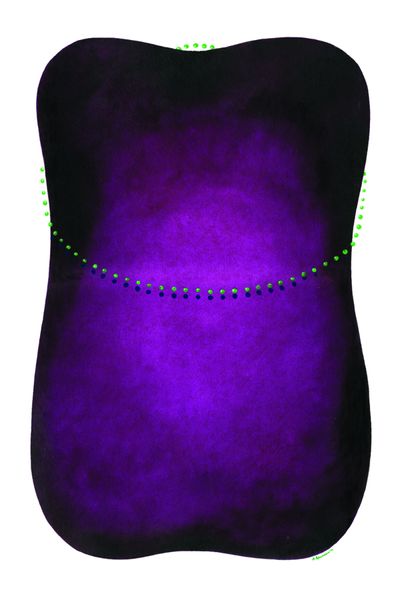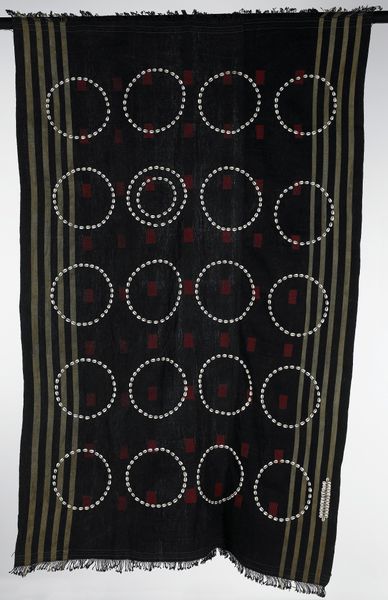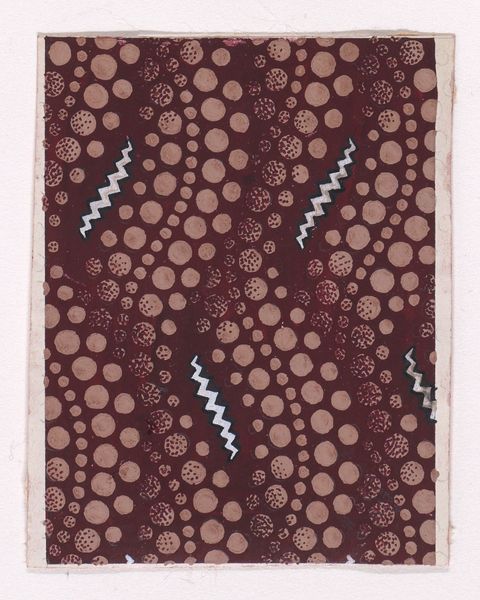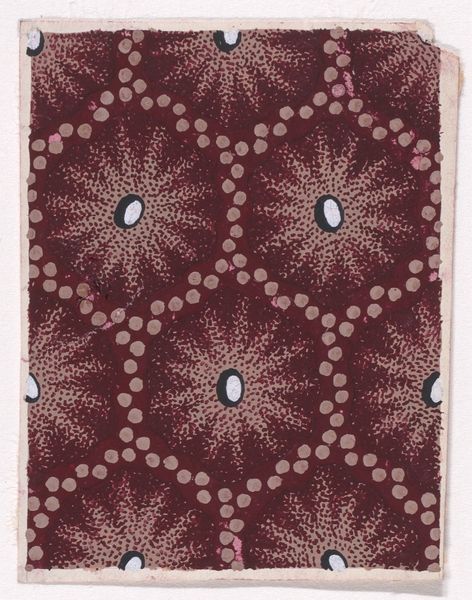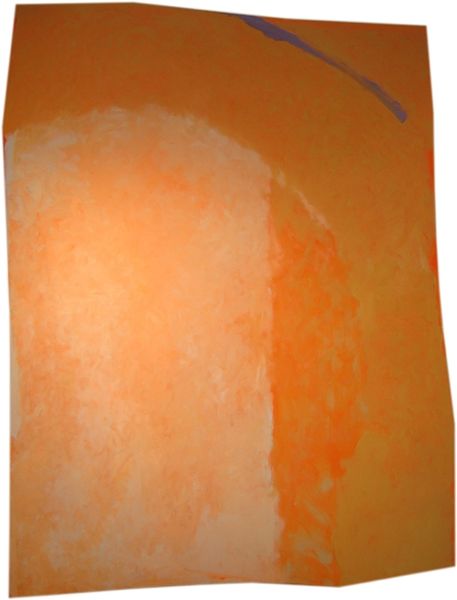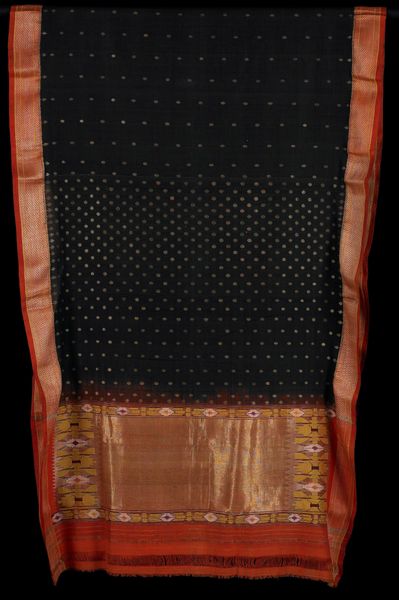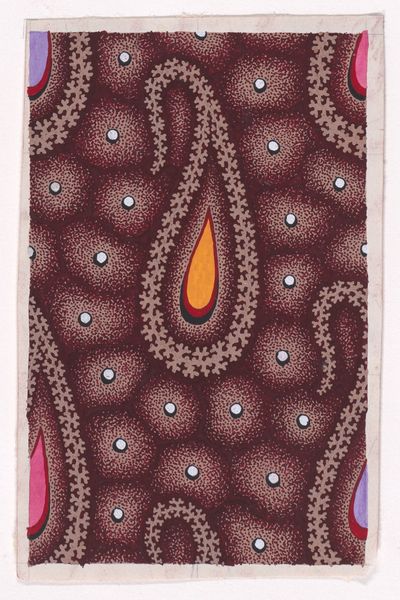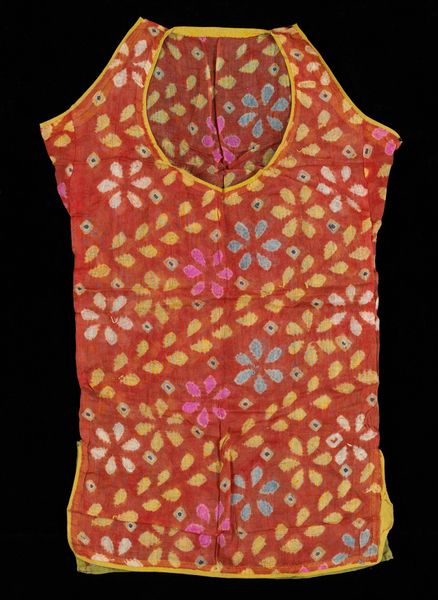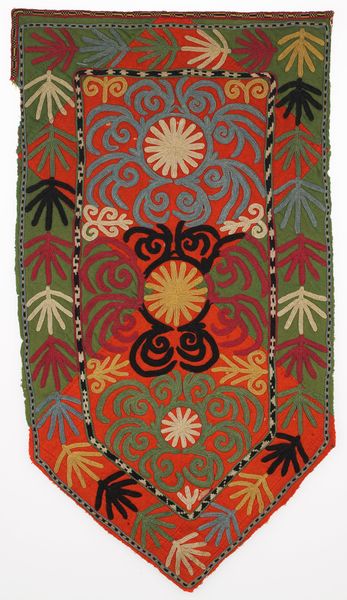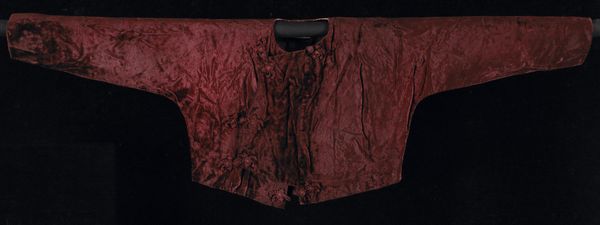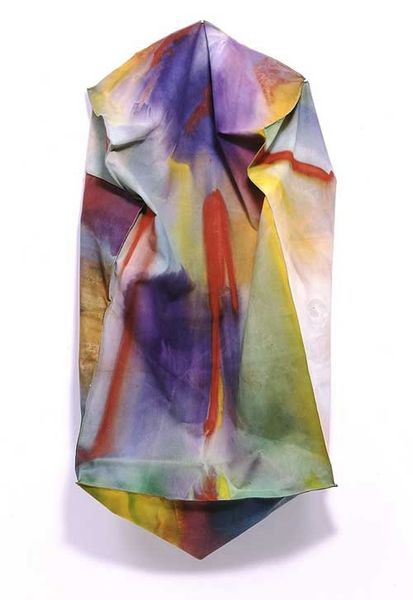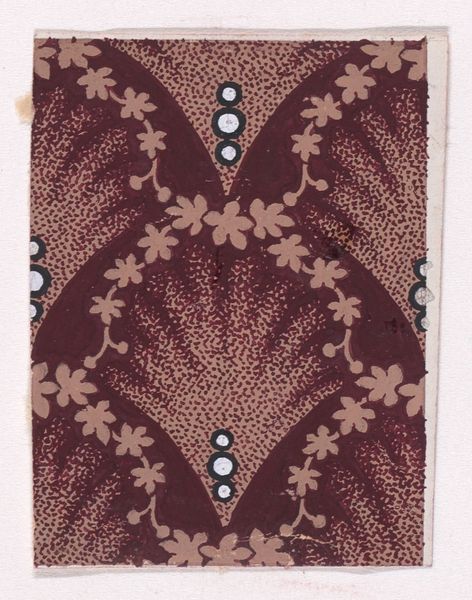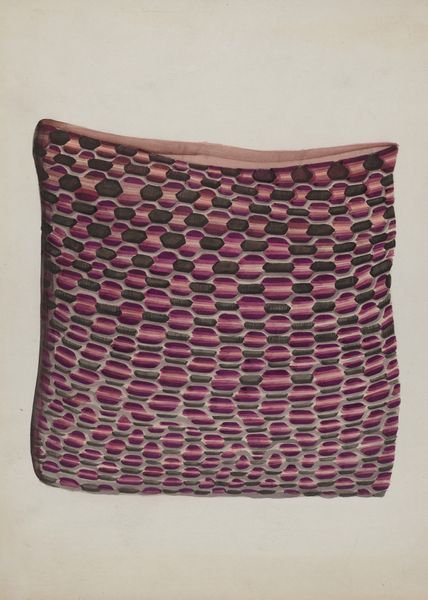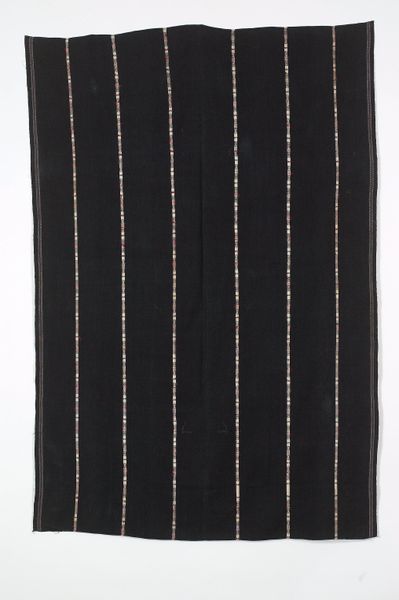
painting
#
painting
#
form
#
geometric
#
abstraction
#
line
Copyright: Oleksandr Aksinin,Fair Use
Curator: Welcome. We’re standing before Oleksandr Aksinin's "Tibetan Fairy Tales," painted in 1976. What strikes you first about this work? Editor: Immediately, I see a muted, dreamlike quality. The dark red almost feels like a velvety curtain or perhaps a stage backdrop. The texture looks surprisingly smooth and continuous despite what appears to be a painterly application. Curator: The artist certainly seems to use color to create depth and invite introspection. I think about the period in which it was made, the Soviet era, and I am curious about the physical creation process. The subtle shading involved might have implied some complexity. Were there many preliminary sketches before painting? Was it part of a broader cycle? Editor: Perhaps. The very form feels symbolic – a stylized vessel, perhaps a womb, or an abstract human figure bound by luminous green cords of small dots. To me, the green looks like an ephemeral barrier of shimmering, vibrant symbols. It hints at restriction, and I wonder if it represents an element within the fairy tales implied by the title, an attempt to impose a structure on otherwise unbounded stories. Curator: Or is the implication that form itself is restricting and perhaps not pure? The medium feels traditional—it is described as simply “painting”— but in contrast with the period’s focus on socialist realism, this more subjective expression appears rebellious through the focus on abstract geometries. Its non-representational status suggests that access to the “true” source is limited, obscured by both social requirements and available supplies. Editor: That’s fascinating. I hadn't considered that. My interpretation stems from a more intuitive level; the piece evokes the sense of being confined, yes, but also of potential— like the moment right before a story unfolds, when the possibilities are still limitless and open for shaping by that line, if you will. Curator: Considering its abstraction, "Tibetan Fairy Tales" feels very specific in its reference. I am tempted to ask whether the "fairytale" functions here as material too. It’s another tool in a world which is in part made of ideology, which an artist has available to push against limits, internal or otherwise. Editor: I see the intersection of restriction and potential that you describe— I would agree with that tension, ultimately – but you’ve encouraged me to think of restriction differently. Maybe it functions as a framework in Aksinin's time, where constraints actually catalyze the creative spirit and meaning, opening new lines of inquiry. Thank you for your insights. Curator: Thank you. I appreciate your point about potential being key in opening possibilities when interpreting this singular work from 1976.
Comments
No comments
Be the first to comment and join the conversation on the ultimate creative platform.
